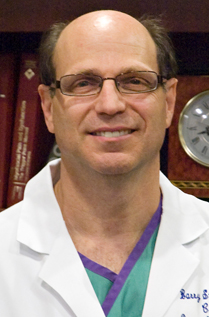By Susan Smigielski Acker
The room spins. It can happen to anyone, but when a patient says it occurs regularly, it is time to consider what is causing it.

Nearly 5 percent of patients presenting to the neurology clinic complain about being dizzy, according to Dr. Patricia Mayes, a neurologist at Tidewater Physicians Multispecialty Group (TPMG) Neurology in Williamsburg.
While the percentage may seem low, in 2011, 2.5 million patients complained about it. And the cost to treat balance disorders and dizziness is more than $1 billion per year, says Dr. Barry Strasnick, Professor and Chairman of the Department of Otolaryngology/ Head and Neck Surgery at Eastern Virginia Medical School.
The chances of a patient complaining about feeling dizzy and having trouble with balance increases tremendously as they age. It is simply more common in elderly patients, Dr. Mayes says.
“About 75 percent of those over the age of 70 will experience some sort of balance disorder. But I see all ages in my office,” Dr. Mayes says.
In addition to feeling dizzy, patients often complain of being lightheaded, experiencing blurred vision, falling and feeling confused, Dr. Strasnick says.
So Many Reasons
The challenge is figuring what is causing it because according to Dr. Mayes, “there are so many causes for the same problem.”
The differential diagnoses include conditions that affect the inner ear or the central nervous system, according to Dr. Mayes.

Dr. Strasnick agrees and gives examples including hypertension, diabetes, epilepsy, head trauma, tumors, infections, encephalitis, multiple sclerosis, migraines and autoimmune disorders.
Patients can experience vertigo with or without hearing loss, Dr. Mayes says.
Medications such as antibiotics, sedatives and tranquilizers can be to blame as well, Dr. Strasnick adds.
While uncommon, dizziness may be a manifestation of a stroke or similar circulation problem. Dizziness is not a typical symptom of a stroke, so many people do not seek medical treatment right away, Dr. Mayes says.
“The best way to rule out a stroke or even a tumor is with an MRI of the brain,” Dr. Mayes says.
What To Ask
When a patient complains about feeling dizzy or having trouble with their balance, Dr. Mayes says physicians need to ask the following questions
When did it start?
How long does an episode last?
Is it intermittent or constant?
Dr. Strasnick says that asking the patient to describe the sensation can also be helpful. Does the room spin or is it more of a lightheaded or imbalanced sensation? Another key is to ask about symptoms often associated with dizziness, including tinnitus, hearing loss and other neurologic symptoms.
So Many Causes
The majority of cases of dizziness are caused by problems affecting the inner ear.
An inner ear disorder known as Benign Paroxysmal Positional Vertigo, (BPPV) is the most common cause of vertigo accounting for up to 25 percent of all cases. It is characterized by acute attacks of vertigo lasting seconds to minutes. It is typically aggravated by head position change and accompanied by visible involuntary movement of the eyes. This disorder is due to displacement of tiny calcium crystals within the inner ear, leading to vertigo that occurs with position changes.
For this condition, Mayes says a simple in office treatment known as the Canalith Repositioning Maneuver (often referred to as the Epley Maneuver) is recommended. This procedure repositions the displaced particles within the inner ear into their proper location, thereby resolving the dizziness. This non-invasive procedure is commonly performed by properly trained physicians or physical therapists. Typically this treatment results in a more than 90 percent success rate in terms of complete resolution of the positional dizziness. For those rare instances of BBPV that arerefractory to repositioning maneuvers, surgical treatment is available.
In many cases dizziness can be due to a virus affecting the inner ear or balance nerve. In these instances, Strasnick says corticosteroids and/or a specific balance therapy known as vestibular rehabilitation therapy is recommended.
Meniere’s Disease, an inner ear, disorder which involves a problem with fluid regulation within the inner ear affects up to 2.5 million individuals. In these cases it is important that patients restrict their salt and caffeine intake. Diuretic therapy is typically administered to further reduce fluid accumulation within the inner ear. Additional options include vasodilator medications and injection of steroids into the middle and inner ear, Dr. Mayes says.
Strasnick adds that surgery is an option for patients with Meniere’s Disease who do not respond to medical therapy.
Migraine sufferers commonly experience dizziness, motion intolerance, loss of balance and even true vertigo. Treatment typically is directed towards preventing the occurrence of the migraine process with a variety of medications.
Patients who suffer from multiple sclerosis have a 50 percent chance of experiencing vertigo. In fact in up to 15 percent of cases vertigo can be the initial presenting symptom. Treatment generally includes medication to reduce the vestibular response, Dr. Strasnick says.
Patients sustaining head trauma commonly experience dizziness and balance problems, which in some instances can be prolonged and very resistant to therapy, Strasnick explains.
To treat vestibular dysfunction, it is important to understand that immobilization actually reduces vestibular compensation while repetitive activity enhances compensation. The optimal strategy, then, is to provide short-term relief while at the same time preserving the underlying sensory conflicts to allow for longer term compensation, Dr. Strasnick says.
Dr Strasnick notes that there are a number of pharmacologic options to treat dizziness, including anticholinergics, antihistamines and benzodiazepines. Similarly, surgical treatment is available for many instances where medications fail to provide relief.
The management of a dizzy patient also often includes vestibular rehabilitation therapy. This modality of treatment takes into consideration that the vestibular system has the ability to adapt and compensate, provided the non-vestibular sensory inputs such as vision and proprioception remain intact. Individual exercises that rehabilitate pathologic vestibular responses are provided through vestibular rehabilitation therapy, and these exercises can be performed by the patient in the comfort of their own home, according to Dr. Strasnick.

